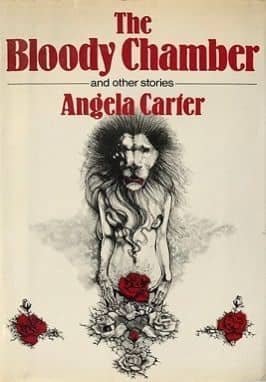Rec
I’ve posted about it before but it helped to bring about the gothic revival and occult epic horror sensation of the 70s. Very atmospheric and engrossing and its references to classic gothic literature can serve as a good jumping-off point for further reading. a group of old men who experienced something awful in their youth meet once a month to exchange ghost stories… a young acclaimed horror novelist arrives and the evil force they had battled before reemerges and overtakes their small New England town.
would also recommend The Turn of the Screw a novella by Henry James…
would also recommend The Turn of the Screw a novella by Henry James…
Jun 14, 2024
Related Recs
Rec
⛈️Frankenstein; or, the Modern Prometheus— The original Frankenstein story, written in 1818. Shelley started writing this when she was only 18, publishing it at 20. It’s a great, beautifully written horror story, and maybe the first novel ever in the sci-fi genre. It covered so much more ground than I was expecting it to.
Other books I’d call spooky:
The Black Spider by Jeremias Gotthelf: A spooky Swiss/German folktale novella about a haunted medieval village. It’s also old (1842) but you wouldn’t really know.
I rec’ed House of Leaves a little while ago, which is another, more contemporary and post-modern, horror story.
I wouldn’t call Blood Meridian by Cormac McCarthy primarily a scary story, but it’s amazing and the final chapter is the most chilling passage of any book I’ve ever read.
I rec’ed House of Leaves a little while ago, which is another, more contemporary and post-modern, horror story.
I wouldn’t call Blood Meridian by Cormac McCarthy primarily a scary story, but it’s amazing and the final chapter is the most chilling passage of any book I’ve ever read.
Sep 27, 2024
Rec

My favourite short stories tend to be creepy or magical. I think due to the necessary open-endedness of short stories, it lends itself most to mystery and magic.
Angela Carter’s Bloody Chamber is a great classic creepy feminist story to start with. Carmen Maria Machado’s The Husband Stitch continued Carter’s legacy I’m a HUGE Kelly Link fan, but her stuff is very strange so might not be for everyone, but my favourite of hers is probably The Specialist’s hat or Skinder’s Veil Shirley Jackson‘s The Lottery is also a classic, and if you like creepy stories and want a good overview of writers in that genre, I recommend the collection “When Things Get Dark”, a collection inspired by the tone of Jackson’s work; it features Kelly link, Carmen Maria Machado, Joyce Carol Oates, and loads of contemporary short story writers. I discovered the story Tiptoe by Laird Barron through this and its possibly my favourite creepy short story, it sent full shivers down my spine in a way no other story had.
Angela Carter’s Bloody Chamber is a great classic creepy feminist story to start with. Carmen Maria Machado’s The Husband Stitch continued Carter’s legacy I’m a HUGE Kelly Link fan, but her stuff is very strange so might not be for everyone, but my favourite of hers is probably The Specialist’s hat or Skinder’s Veil Shirley Jackson‘s The Lottery is also a classic, and if you like creepy stories and want a good overview of writers in that genre, I recommend the collection “When Things Get Dark”, a collection inspired by the tone of Jackson’s work; it features Kelly link, Carmen Maria Machado, Joyce Carol Oates, and loads of contemporary short story writers. I discovered the story Tiptoe by Laird Barron through this and its possibly my favourite creepy short story, it sent full shivers down my spine in a way no other story had.
Rec

I’ve loved a good weird, creepy, and/or magical story ever since I first read The Bloody Chamber. Here’s a few I recommend:
Stranger things happen - Kelly link white cat, black dog - Kelly Link her Body and Other Parties - Carmen Maria Machado The Bloody Chamber and Other Stories - Angela Carter the Dangers of Smoking in Bed - Mariana Enríquez When Things get dark - Edited by Ellen Datlow The Frangipani Hotel - Violet Kupersmith
Stranger things happen - Kelly link white cat, black dog - Kelly Link her Body and Other Parties - Carmen Maria Machado The Bloody Chamber and Other Stories - Angela Carter the Dangers of Smoking in Bed - Mariana Enríquez When Things get dark - Edited by Ellen Datlow The Frangipani Hotel - Violet Kupersmith
Top Recs from @taterhole
Rec

My dad teases me about how when I was a little kid, my favorite thing to do when I was on the landline phone with somebody—be it a relative or one of my best friends—was to breathlessly describe the things that were in my bedroom so that they could have a mental picture of everything I loved and chose to surround myself with, and where I sat at that moment in time. Perfectly Imperfect reminds me of that so thanks for always listening and for sharing with me too 💌
Feb 23, 2025
May 28, 2025

